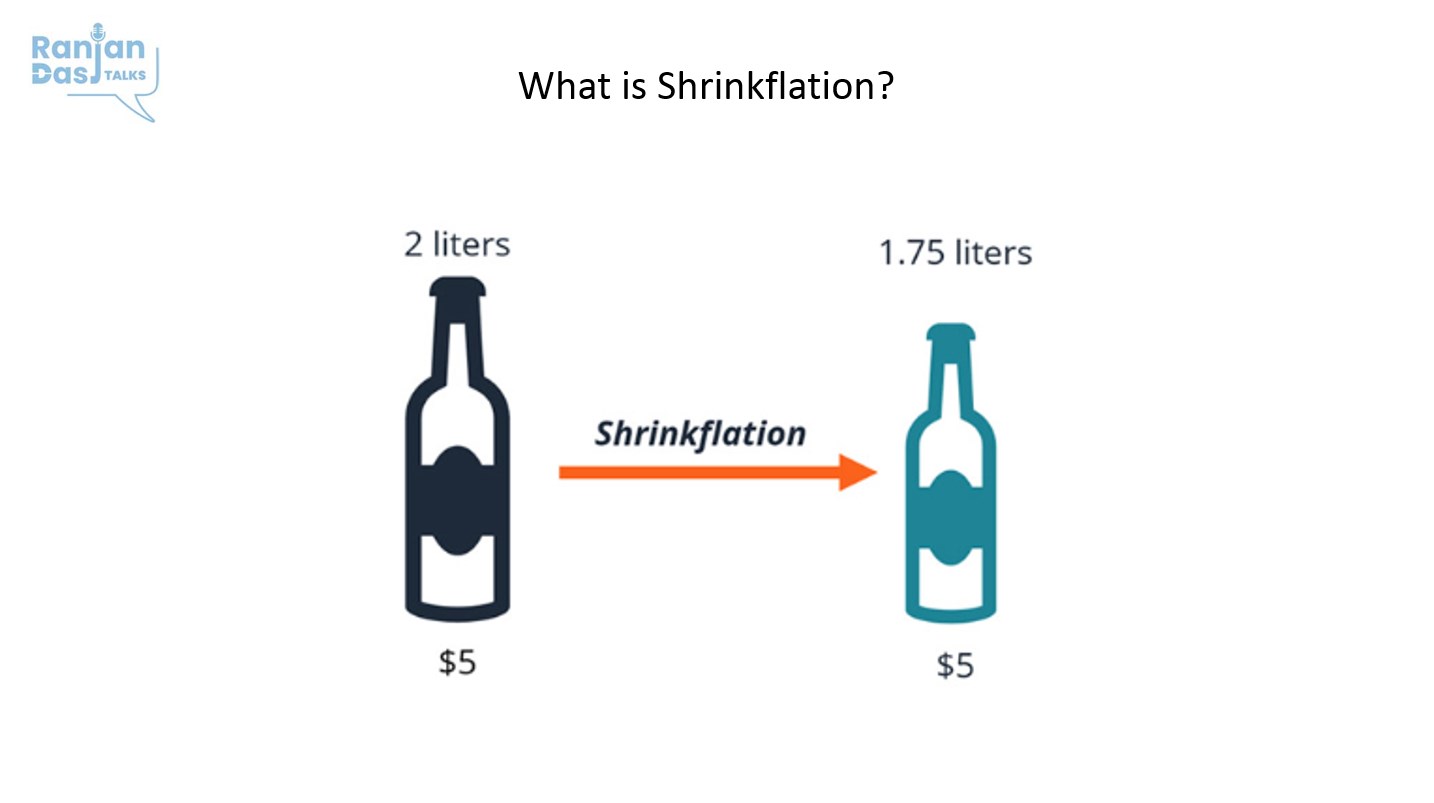
Blog
Shrinkflation
When you walk into a store, do you stop to look at the ingredients list and its components?

Ranjan Das
· Posted: 2022-06-21
Posted: 2022-06-21

When you walk into a store, do you stop to look at the ingredients list and its components?
When you're buying food and other products, does it matter how many ingredients are in your meal? Is it about the size of the product or just how much it costs?
Companies are well aware of this which is why we are witnessing shrinkflation all over the place. Shrinkflation occurs when businesses try to save money due to rising prices by putting less food in the bag or smaller portions on the plate while charging the same amount to make more money. Sometimes, it's fewer chips in a chip bag; other times, it implies the quality of the goods and services is declining. This might be due to substituting a higher quality ingredient with a cheaper and lower quality one.
Shrinkflation in all its forms tend to be easier for companies to pass on to customers than raising prices. According to a Harvard Business School research paper, consumers are more sensitive to price changes than they are to size changes. If a product becomes ten times more expensive, we may reconsider whether the product is really worth it. But if the price remains constant while the amount we get decreases, people will likely to continue in buying the same thing because no one truly notices the difference.
So what exactly is shrinkflation? And how does it impact the average person?
Let's start with the basics: "shrinkflation" is a combination of the words "shrink" and "Inflation." Inflation, as we all know, is the increase in prices for goods and services over time. Shrinkflation is when prices stay the same but the size of the product or the quality goes down—that's when you get less value for your money.
The economy has been shaky for a while now which is evident with the rising inflation and many companies have had to make some tough decisions in order to survive. One of the things they’ve done is downsize their products in order to keep costs down.
"Downsizing comes in waves and it tends to happen during times of increased inflation," said Edgar Dworsky, founder of Consumer World and Mouseprint. "Bottom lines are being pinched and there are three basic options: raise the price directly, take a little bit out of the product or reformulate the product with cheaper ingredients."
According to Dworsky, companies typically blame downsizing on three factors:
1. Price increases in raw materials
2. An increase in transportation expenses
3. Increase in competitive prices
Though inflation is a valid reason, Utpal Dholakia, a professor of marketing at Rice University, states that product weight swings have occurred all the time as corporations undertake customer research and adjust product lines to maximize sales and profitability. Dholakia claims that brands aren't being deceptive or exploiting customers simply because their product shrinkage is now linked to inflation; it's what they have done all the time.
So how does shrinkflation affect the average person?
Shrinkflation might not seem like much of an issue at first. After all, it's just a few fewer chips in your bag or a smaller bottle of grape juice has less quantity than before. But the fact is that you are paying the same amount for less of an item—a frustrating reality for consumers who are already dealing with rising costs due to overall inflation.
Some customers believe shrinkflation is a deceptive approach since corporations use the same packaging but provide less to them. There's an entire subreddit dedicated to posts that highlight decreased portion sizes of popular products with many users complaining about the practice. However, if inflation rises, so will the cost of raw materials, and the shrinking will continue. The impact will be visible in the burden placed on customers' expanding expenses and hence their wallets.
How to avoid shrinkflation
The fact is, most brands don't cut back on all their products at once. Instead, they'll keep some of their products at the same size while reducing others by a small amount—often only a fraction of a percent. This means that even if you're buying an item that's still the same price as before, you'll still be paying more for it than last time.
Fortunately, there are ways to avoid shrinkflation and get what you paid for last time without having to spend hours searching through different stores looking for comparable deals.
Dholakia uses the example of a 9.25 ounce packet being reduced to 8.75 ounces while maintaining the same 238.11 rupees. Because of the shrinkage, the price per ounce has risen to 27.25 rupees. The same brand sells a 14 ounce package for 336.55 rupees, but the size and pricing remain the same. The huge variety is only 23.43 rupees per ounce, so we are getting a better value for the 14 ounce pack.
Aside from calculating the price per unit, you can avoid shrinkflation by buying fresh foods instead of pre-packaged foods which are less likely to shrink. While you may have strong feelings of devotion to a specific brand or product, shrinkflation may cause you to be receptive to alternative brands, often generic, that offer a similar product at the same value you previously obtained.
Marketing is everything, products are
woven around it.